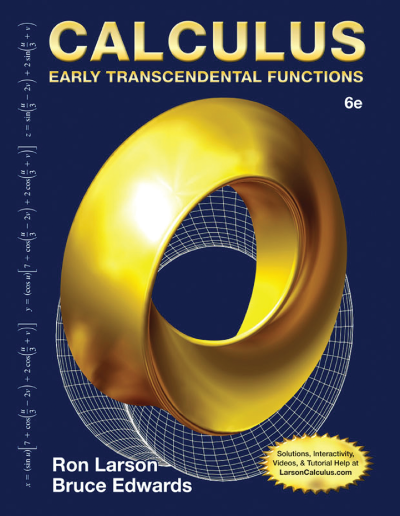Niels Henrik Abel
(1802 – 1829)
The Norwegian mathematician Niels Henrik Abel is a striking example of a man who succeeded in changing the course of the history of mathematics, despite seemingly overwhelming obstacles.
Born August 5, 1802 on the island of Finnøy in Norway, Niels was the second of six children born to Sören Georg Abel, a Lutheran pastor, and his wife Ane Marie Simonson. When Niels was very young, Norway and Denmark, which were then united as one kingdom, were subject to a British blockade in retaliation for their alliance with France during the Napoleonic Wars. The resulting famine, coupled with the family’s meager income, introduced Niels to the relentless poverty that would hound him all his life.
The Reverend Abel, a gifted scholar who had been educated at the University of Copenhagen, taught Niels and his older brother at home until Niels was thirteen. By that time, Niel’s parents, both of whom were alcoholics, were unable to continue to care for all their children. Niels and his older brother were awarded scholarships to the Cathedral School in Christiana, now Oslo, to which they were sent in 1815. Unfortunately, Niel’s brother’s mental illness precluded his continued enrollment at the school and he was soon dismissed. Niels struggled with his studies, alone, his classwork giving no hint of his genius.
In 1817 a tragedy at the Cathedral School lifted Niels from obscurity. The school’s mathematics teacher beat a student so brutally that the boy died. The instructor was hastily replaced by 22-year-old Bernt Michael Holmboe, who almost immediately recognized Abel’s extraordinary gift for mathematics. Holmboe acquainted Niels with the work of Lagrange, Laplace, Gauss, and Euler. Abel soon surpassed his teacher, and in fact devised a proof expanding Euler’s binomial theorem for rational powers.
In 1821, Pastor Abel died in disgrace. His congregation, scandalized by his drunkenness and his violent threats against his political adversaries, were no doubt relieved to see the last of him. Unfortunately, the pension allotted to his widow was inadequate to support her and the Abels’ six children. Niels, at eighteen years of age, assumed responsibility for the support of the family.
Despite this crushing burden, Abel entered the University of Christiana in the fall of 1821. The university provided his room and board without charge, while his professors paid his tuition. Abel justified their faith in his abilities. He prepared papers detailing his mathematical discoveries, including the impossibility of solving the general quintic equation in terms of radicals. Significant though they were, however, these papers had little effect on the European mathematical community. There was virtually no one in Norway capable of understanding, much less rebutting or expanding, Abel’s work. It soon became apparent that in order to gain the recognition he deserved, Abel would need to meet with the great mathematicians of France and Germany. He was fortunate in receiving, after a long delay, a grant from the Norwegian government for two years of foreign study.
While in Berlin, Abel was befriended by Privy Councilor August Leopold Crelle, a respected architect and engineer with a keen interest in mathematics. In 1826, Crelle founded the Journal für die reine und angewandte Mathematik, primarily as a vehicle for Abel’s articles. Crelle’s Journal, the first issue of which featured seven papers by Abel, was the most influential periodical of its kind in nineteenth century Germany and is still in existence.
Concurrent with the publication of the first issue of the Journal, Abel met in Paris with Dirichlet and Cauchy, among others. Apparently these preeminent mathematicians were unable to recognize Abel as one of their own, and Abel was far too self-effacing to correct their error. When the French Academy of Sciences ignored the paper he considered his masterpiece, Abel acknowledged defeat and returned to Norway, sick, discouraged, and deeply in debt.
Abel managed to secure a position as a substitute teacher at the University of Christiana, though his salary was inadequate to enable him to marry his fiancee. He diligently prepared manuscripts detailing the discoveries that would one day be known by his name: Abelian integrals and functions, Abel’s partial summation formula, Abel’s series, Abelian groups, Abel summability, and Abel’s integration equation. These papers he sent to Crelle for publication; meanwhile, Crelle was using his considerable influence to obtain a post for Abel at a new scientific institute forming in Berlin.
Abel was apparently unaware that even as he labored in poverty and rapidly failing health, he had become something of a mathematical sensation in France and Germany. On April 8, 1829, Crelle wrote to him with the happy news that Abel had been awarded a prestigious position in Berlin. Unfortunately, Abel had died of tuberculosis at the age of twenty-six, two days before.
Links
http://www-history.mcs.st-andrews.ac.uk/Biographies/Abel.html
http://www.vigyanprasar.gov.in/scientists/NHAbel.htm
References
- Asimov, Isaac. Asimov’s Biographical Encyclopedia of Science and Technology. Garden City, New York: Doubleday & Company, Inc., 1972.
- Ball, W.W. Rouse. A Short Account of the History of Mathematics. 1908. Reprint. New York: Dover Publications, Inc., 1960.
- Boyer, Carl B. A History of Mathematics. 2d ed., rev. Uta C. Merzbach. New York: John Wiley & Sons, Inc., 1991.
- Gillispie, Charles Coulston, ed. Dictionary of Scientific Biography. Vol. I. New York: Charles Scribner’s Sons, 1970.
- Simmons, George F. Calculus Gems: Brief Lives and Memorable Mathematics. New York: McGraw-Hill, Inc., 1992.
- Struik, Dirk J. A Concise History of Mathematics. New York: Dover Publications, Inc., 1987.











